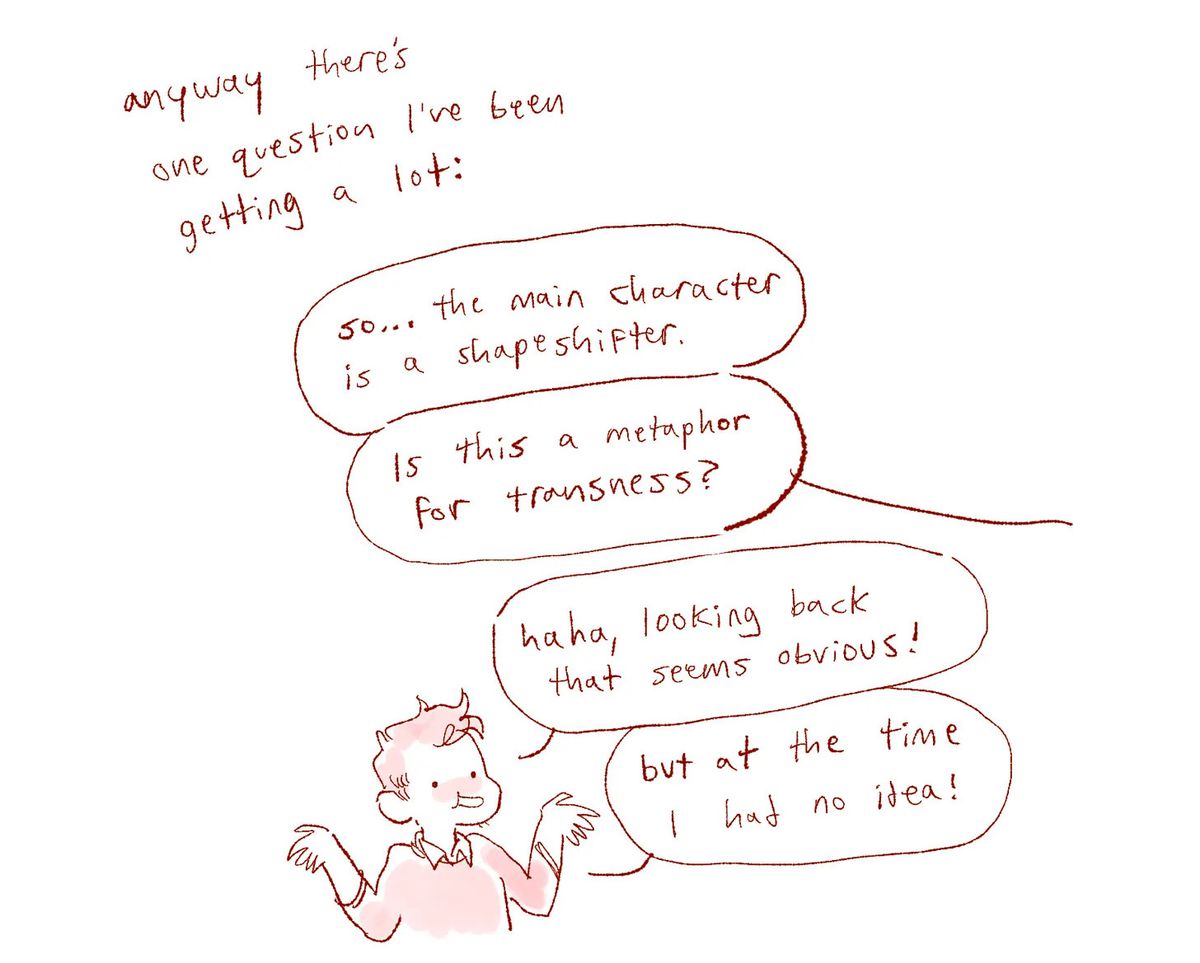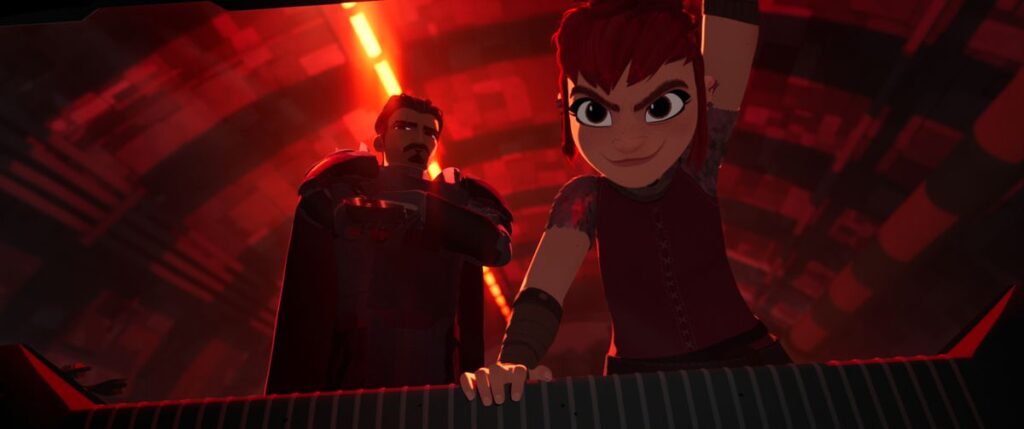When the animated movie Nimona arrives on Netflix on June 30, fans of the original webcomic Nimona and the graphic novel that collects it will immediately notice massive changes to the story. The style of humor has changed radically, even with some of the specific gags preserved. The movie’s retro-futurist world — a blend of sci-fi technology and medieval culture — is somewhat like the book’s, but it has much more structure and history, with more emphasis on the ruling class. The second protagonist, whose name has changed tellingly from Ballister Blackheart to Ballister Boldheart, is a much softer and more helpless character in the movie, and his story is massively different.
At a press day leading up to Nimona’s release, writer-artist ND Stevenson explained that all those changes felt necessary, but that none of them mattered as much as preserving the title character as she was originally written.
“In the adaptation, I knew that things were going to change,” Stevenson said in a presentation livestreamed for select press outlets. “But it was always really important to me that Nimona herself remain the center of this story, and that the things that made her were not removed or sanded down or simplified too much.”
Nimona, a mysterious shape-changer who arrives at Ballister’s secret fortress and demands to be his sidekick after he’s framed as a villain, is the heart of both the book and the movie versions of the story. While she gets a much clearer backstory in the movie, she’s still the most recognizable character from the book, both in terms of her looks and her personality.
Image: Netflix
“One thing that I think is really important about this story for me — and it was really important to see in the movie — was the darkness at the heart of it,” Stevenson said. “Nimona is not just quirky, she’s not just fun, she’s not just a cool kick-butt protagonist. She has a lot of fear and a lot of pain at her heart, and that comes out as anger. That was something that I found very cathartic at the time.”
Stevenson, who has come out as trans since beginning Nimona in 2012 as an art school project, has only recently realized how much Nimona’s powers to change her own shape were an unconscious trans fantasy. At his Substack, I’m Fine I’m Fine Just Understand, Stevenson recently posted a particularly funny and self-effacing cartoon blog about looking back at the comic and how he wrote about it at the time without realizing what he was expressing about himself. And in his 2020 memoir The Fire Never Goes Out, he collects diary comics from that time period, tracking his mental health struggles and difficulties with self-expression, which he channeled into the original Nimona.
“I was looking for an outlet for my emotions, and I felt like I wasn’t really able to express them,” Stevenson said at the press day. “But through her, I could do that. At the end, she becomes this monster — the monster everybody’s been telling her that she is. And she’s just like, You know what, you want a monster? You got one. Here I am. That was something that I really needed to see. And it was kind of a hard sell for a female character, then and now.”
While the movie’s expression of that idea is radically different from the book’s, it comes from the same place emotionally. “They absolutely stay true to that and brought that to life,” Stevenson said. “They even took that further, to show she’s not a problem to be solved. She’s not someone who needs to be fixed. You don’t have to understand her to love her. And I think that’s going to mean so much to so many people. The book is dedicated to monster girls. And I think there are so many monster girls and boys and beyond who are going to see themselves in her.”

Image: ND Stevenson via Substack
Stevenson’s insistence that Nimona remain recognizable in the movie extended to aspects of her character design, color scheme, and movement. “One of the things that was really important to me was her body type,” he said. “She’s chubby and she’s curvy, but she’s never sexualized, and she’s gender-nonconforming. She just has her own unique style. She chooses to look this way. And so that was something I just really wanted to make sure — no matter how much [the story] might change in the adaption, that that was something that stayed true.”
“It was very emotional to me to be able to see her come to life, and to see her this way and be like, That’s her. That’s Nimona. That’s this character who got me through so many hard times as a young person,” Stevenson said. “It was such a power fantasy for me. And I think for lots of kids, they’ll feel the same way. She can’t be confined. She can’t be constrained to any form. […] So I’m really, really excited for kids to be able to see themselves in that power fantasy.”
Nimona arrives on Netflix on June 30.

